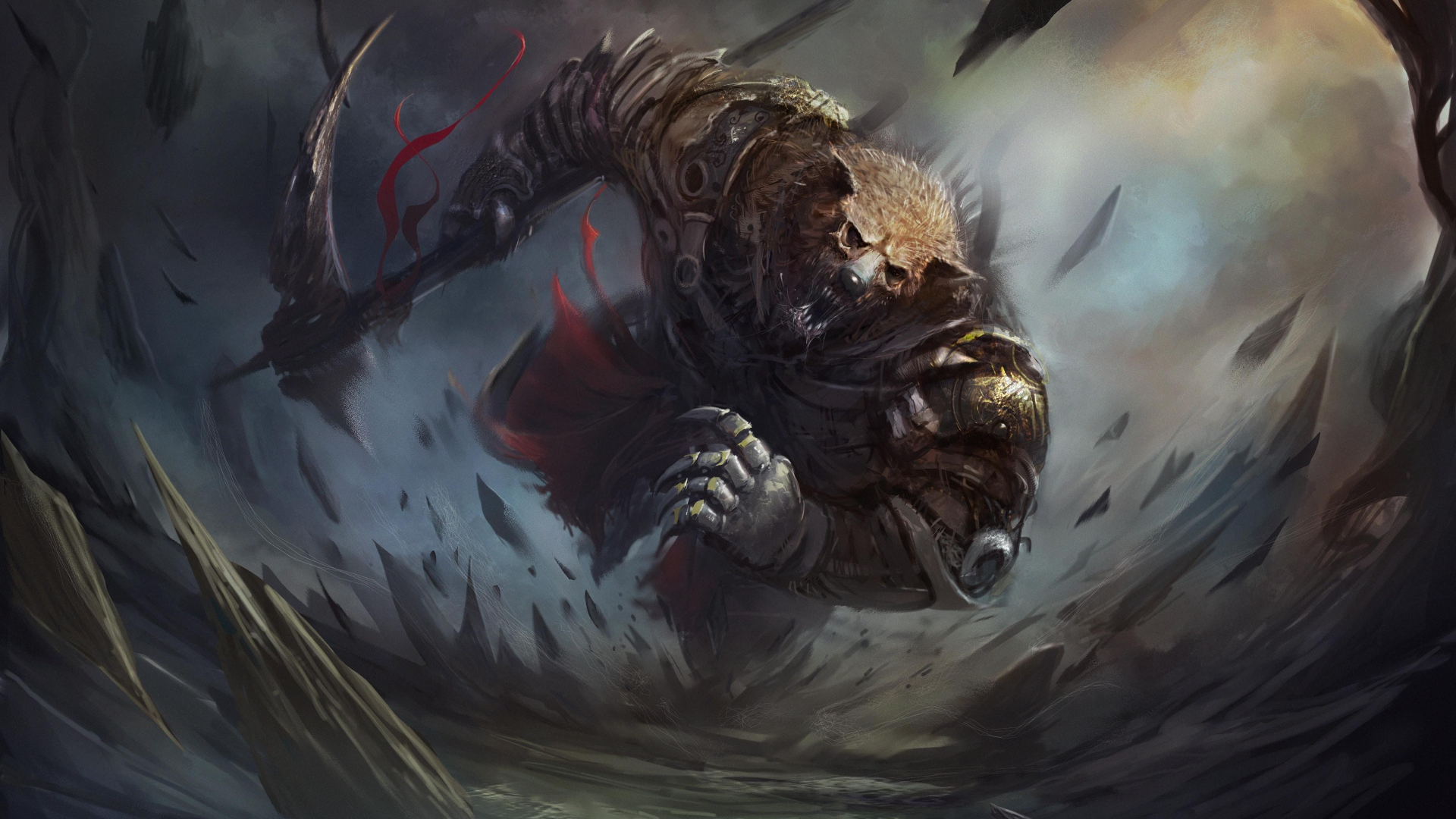Therianthropy is the ability to shapeshift into a half-beast, with heightened strength, agility and instincts. Lycanthropy is the most well-known of these conditions, but a myriad of therianthropes exist. The nature of such beasts varies from the savage, man-eating wereleopards to the more reclusive werebears, but all therianthropes share several key traits; a therianthrope transforms under the light of a full moon and their hide is all but impenetrable to any weapon but silver.
Blessing & Curse
Therianthropy is a power borne of the druidic goddess
Artoš as both curse upon her foes and mystic boon to her children.
As a curse, therianthropy is an uncontrollable shapeshifting suffered by the afflicted under the light of a full moon. In this savage state, the afflicted spreads havoc and destruction until the moon rests and dawn comes. As a reflection of Artoš' vehemence toward humanity, the curse of therianthropy afflicts humans exclusively.
As a blessing, the power is accepted freely by a favoured druid of Artoš. The transformation is no less savage and no more in control than those of the accursed humans, however the 'afflicted' uses their power as a weapon to overwhelm their prey and take back the wilderness from the humans' destructive advances.
Types of Therianthropy
Therianthropy holds to strange patterns. Each were-beast is found almost exclusively in one particular area (primarily human-dominated provinces), and these were-beasts are drawn to that area. A werebear who suffers their curse in Nuriliath will feel compelled to sojourn to Cambria; so great is their need to wander and hunt in those lands, even if the afflicted human had never before stepped foot on Cambrian soil.
Leothropy. Typically wereleopards, but occasionally tigers and lions also, these beast-men are most common to Bharazad, occasionally stretching into the eastern reaches of Nuriliath. Leothropes are supernaturally agile, quiet and quick. Leothropes are considered to be the most savage of therianthropes; the cat's hunting instincts are utterly implacable.
Ursathropy. Werebears. Grizzlies are common to what is now the Broken Colonies and North Cambria, and arctic werebears are occasionally spotted in Meridon. A werebear is frighteningly powerful, with strength enough to crush a man in full plate like a stone shattering an egg. Werebears are generally solitary and territorial. If they live in a community at all, they are the only therianthrope.
Vesperthropy. Werebats, often taken by peasants as horrific vampires. These creatures are found throughout the thick forests of Bedegar. A vesper, like a vampire, thrives on blood alone, walks at night, wields night magic and often commands the beasts of the dark woods. A hunter wielding holy water and wooden stakes makes for easy prey for a vesper, whose divine origins differ greatly from those of the necromantic vampires.
Lycanthropy. Werewolves, abundant in Anderim. Werewolves, like their bestial kin, are social and are usually found in packs lead by an alpha. They balance the strength of the werebear and agility of the wereleopard with wolf-like pack tactics, to violent and lethal effect.
Other Therianthropes
Some wizards and scholars believe therianthropy was once more widespread and diverse. These scholars hold that gnolls were, at one time, werehyenas (likely relatives of werewolves) and the lizardfolk of Bedegar's jungle-wood were were-lizards. Whatever the truth, neither werehyenas nor werelizards exist today, and both gnolls and the lizardfolk appear to have lost their shapeshifting abilities.


